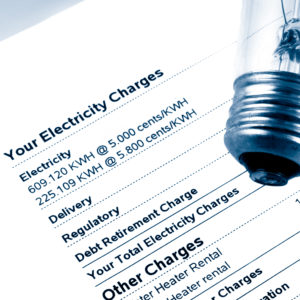In response to the economic hardships experienced by financially vulnerable Americans due to the COVID-19 pandemic, state utility regulators and the U.S. investor-owned electric power industry have commendably worked in partnership to suspend utility service disconnections for non-payment.
Jurisdiction over utility disconnections is granted to state regulators, and each state commission already has exercised this statutory authority to develop tariffs, rules and regulations to address disconnections with appropriate consumer protections.
When customers do not pay their bills on time, utilities are required to follow carefully prescribed rules prior to disconnection. Utilities also have staff and programs in place dedicated to helping both residential and business customers manage their financial challenges, with the goal of avoiding disconnections.
These rules and programs have served customers well in normal conditions, but clearly, extraordinary relief is needed during these unusual times.
Thankfully, investor-owned electric utilities in all 50 states and D.C. have proactively responded to their customers’ needs by announcing in March a halt in disconnections. As a result, customers can navigate this uncertainty and the alternative payment plans, budget billing and universal service programs that are available to them without worrying about losing their electricity service.
This state-led expansion of payment flexibility required close coordination with state regulators, and electric utilities now have even more tools available to help provide customers with solutions tailored to their financial circumstances.
Unfortunately, Congress is considering proposals that, if passed, would replace the successful existing state programs that are designed to support customers.
Even though well intentioned, a federally imposed, overly rigid, “one-size-fits-all” policy would do away with the existing state programs, ultimately harming the customers that state regulators have been working so hard to protect. Each state and individual community will recover from this pandemic at different times.
Accordingly, each utility and its customers may have distinct challenges that will likely not be well-accommodated by a uniform policy. Federal deference to state regulators will benefit all customers, especially those with the most complicated financial challenges.
Rather than dictate limits on utility service, the Congress can meaningfully assist vulnerable customers by significantly increasing funding for the federal Low-Income Home Energy Assistance Program (LIHEAP). As chairman of the Michigan Public Service Commission, I personally witnessed how LIHEAP funding directly supports low-income customers by helping them to pay their home energy bills.
Congress typically only authorizes enough LIHEAP funding to support less than 20 percent of households that would qualify for assistance. Recognizing this systemic shortfall, Congress authorized an additional $4.7 billion during the global financial crisis in 2009.
With widespread unemployment that grows by thousands every day, now is the perfect opportunity to increase funding for this bedrock program on which so many American families depend.
As vulnerable customers miss or delay paying their utility bills, those totals will add up, creating challenges for both customers and utility companies. Again, individual electric utilities are best equipped to monitor and manage these effects, with oversight from their state commissions that already are monitoring the effects on customers and on business operations and finances.
All these variables can potentially increase financing costs and damage cash flow for utilities, which will ultimately affect future costs for customers if not handled carefully now.
To minimize these effects, customers who are able to pay their utility bills in full and on time should continue to do so. Additionally, state regulators should consider options to help address these challenges.
State regulators in 26 states already have proactively set up mechanisms that will help to monitor and potentially offset some of the negative consequences of increased bad debt costs, increased operational expenses and other COVID-related effects. But more must be done.
To begin with, several states have pre-existing bad debt riders or trackers that will facilitate the recovery of increased bad debt costs between regulatory rate reviews. In other instances, these costs can be tracked and included in a utility’s next rate review request.
At least 14 states recently have authorized regulatory asset treatment to defer pandemic-related costs for future recovery. With commission scrutiny, deferred regulatory assets on the balance sheet can be recovered, subject to a reasonableness review, in a future rate proceeding.
Utilities, state regulators and other interested stakeholders can work together to determine the appropriate recovery amount, start time, and amortization period that balance both customer and company needs.
Between voluntarily suspending service disconnections, creating enhanced customer support programs, and ensuring that prudent pandemic related costs (both direct and indirect) are being carefully tracked for future rate reviews, investor-owned utilities and state regulators are demonstrating that their focus during this pandemic is where it should be — on helping affected customers in their time of need.

